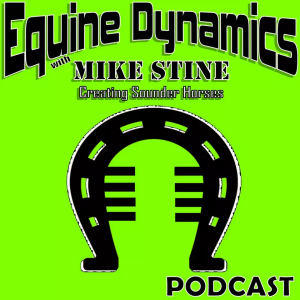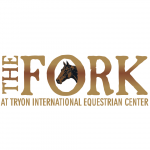It’s the weekend. After a hard week of work, appointments, and taking care of your kids, you finally have some free time to yourself. And you’re headed to the barn.
You chat excitedly with other riders as you put out your tack and grooming tools, then head out to your horse’s paddock. You get him into the grooming area, then glance down. Horrified, you see a split up the side of his hoof. ANOTHER ONE.
Your tack box is stuffed with gels and oils. You could take a nice vacation for what you spend on biotin supplements each year. But your horse’s feet still split at every opportunity.
If your horse has a crack that won’t go away it might not be from the wet weather this summer. Or something lacking in his grain. His genetics aren’t the likely culprit, either.
It’s probably because his feet are unbalanced.
Balance Isn’t What You Think
“Balanced” feet don’t happen when every hoof is trimmed to the same length. In fact, a balanced hoof might not match the other feet, especially during the process of correcting past trimming and shoeing. Balance comes from trimming the hoof based on the horse’s conformation (both in the foot and throughout the body) and how the horse moves.
One common imbalance seen in horses is long-toe/low-heel syndrome. This occurs when the front of the foot is allowed to grow too far forward, the heels are trimmed short, and the hoof capsule takes on a long, narrow shape.
When long-toe/low-heel develops in the feet, you’ll see quarter cracks. If the balance issue isn’t corrected, there’s nothing you can feed or put on the hooves to make the quarter cracks grow in. And the quarter crack will get worse until the structures inside the foot are affected, putting your horse in pain and out of work for months.
That’s what a client of mine had to deal with.
The Situation
My client bought a former upper-level dressage horse as a schoolmaster for herself. He came with a quarter crack on his right front hoof.
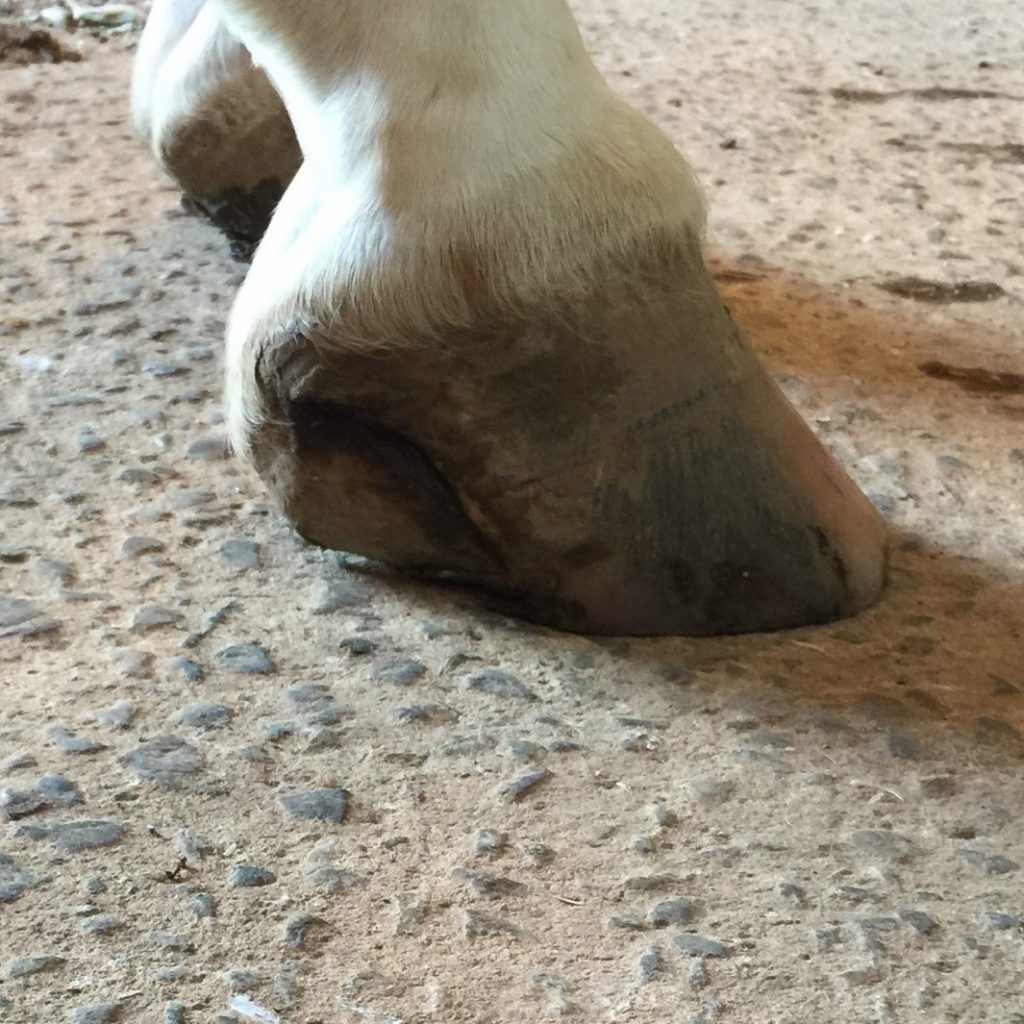
He’d had some time off to recover from a suspensory injury before he was sold. As he went back into work, the hoof started separating. The separation torqued the tissues underneath, causing inflammation.
As you can see in the picture above, this horse has a lot of toe growing out front. His heels don’t completely touch the ground at the back of the foot – giving him what’s called contracted heels.
The Solution
With this much inflammation, it’s better to cut off the inflamed area and let it regrow (the official term is reset). That’s what we decided to do with this guy.
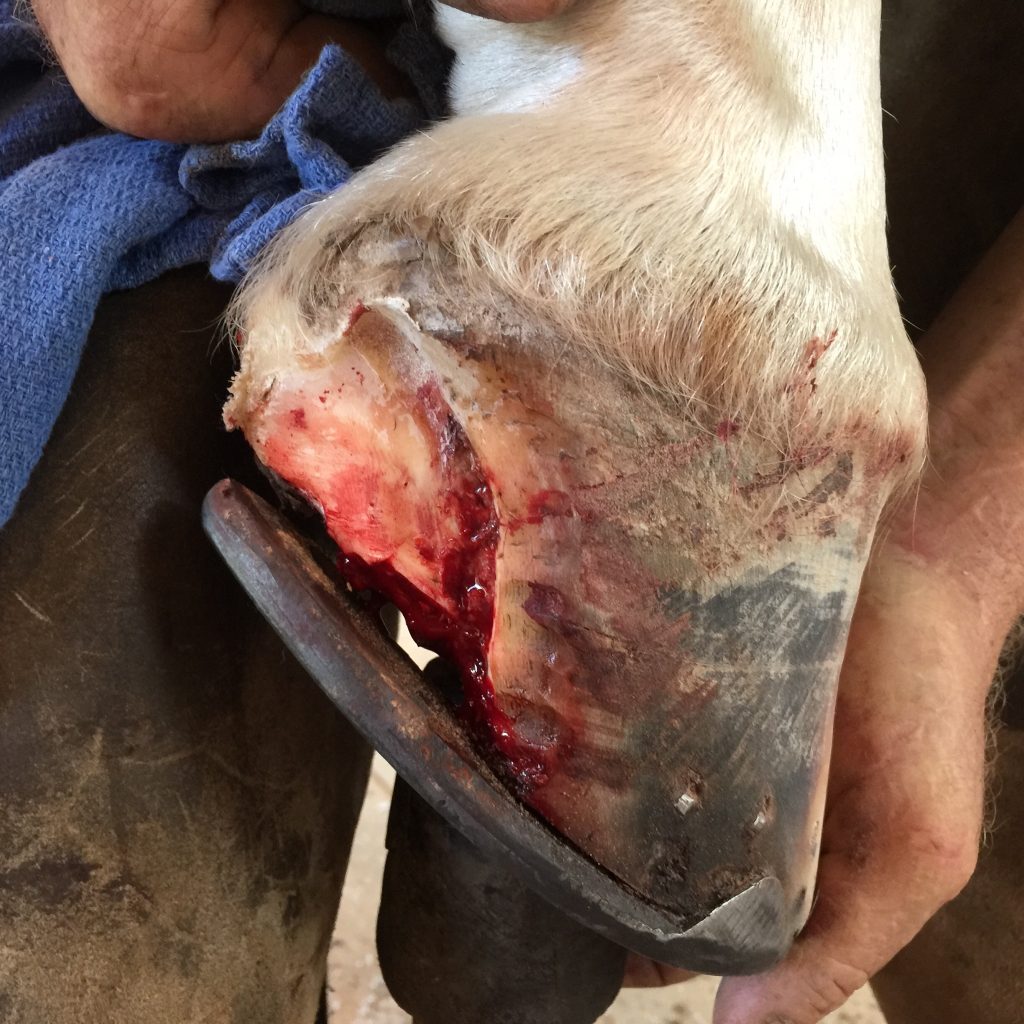
Some veterinarians and farriers may decide to build up the foot with acrylic. But by leaving it uncovered, we leave the hoof open for applying medication and to prevent rot from setting in under the acrylic. Applying acrylic over the affected area also increases your horse’s chances of developing an abscess.
To keep the foot stable, I put him in a rocker toe shoe to improve his breakover and take the pressure off his foot. I didn’t want him digging the front of his hoof capsule into the ground.
I also floated the affected area of the shoe to take pressure off of the back corner of the foot. “Floating” means adding some air space. The last thing I did was fill the bottom of the foot with EquiPak to provide cushioning and to spread out the pressure, keeping it off of the hoof wall.
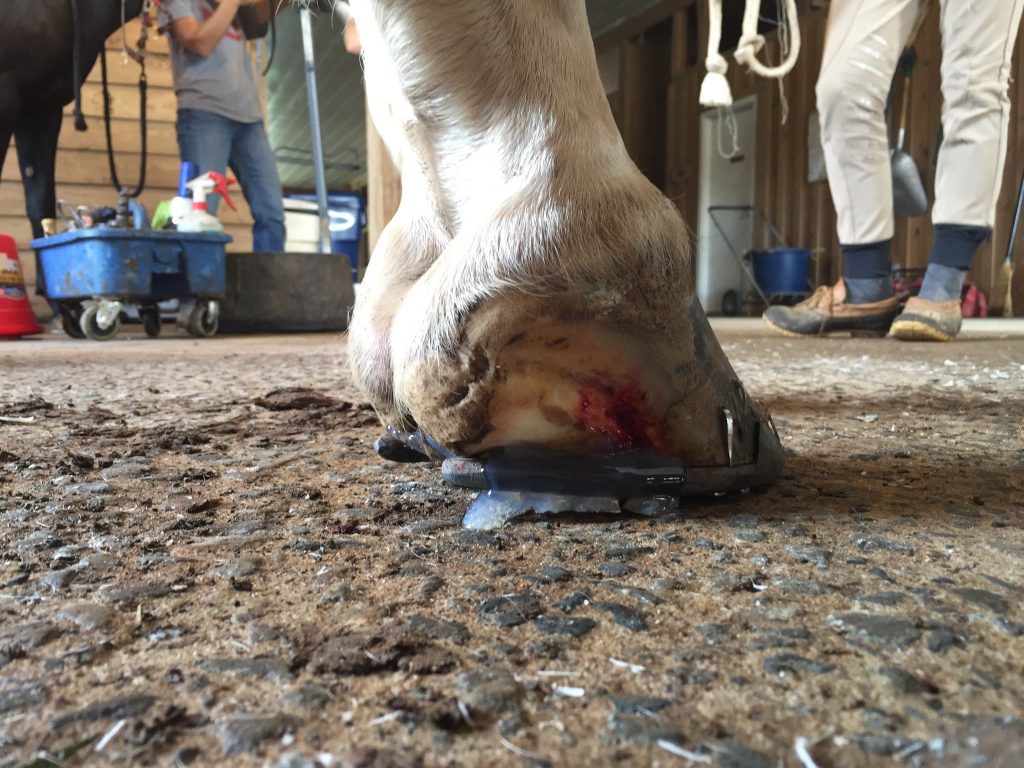
Another way to stabilize the front of the foot is by adding more clips. One horse I’ve worked on with a similar injury in his foot needed four up front.
The Result
Once the balance was addressed, the hoof wall I removed grew back in nicely, as you can see in the pictures below. The heel is now growing out toward the ground. If you look at the new hoof growth coming out of the coronet band, the front of the foot has started moving back.
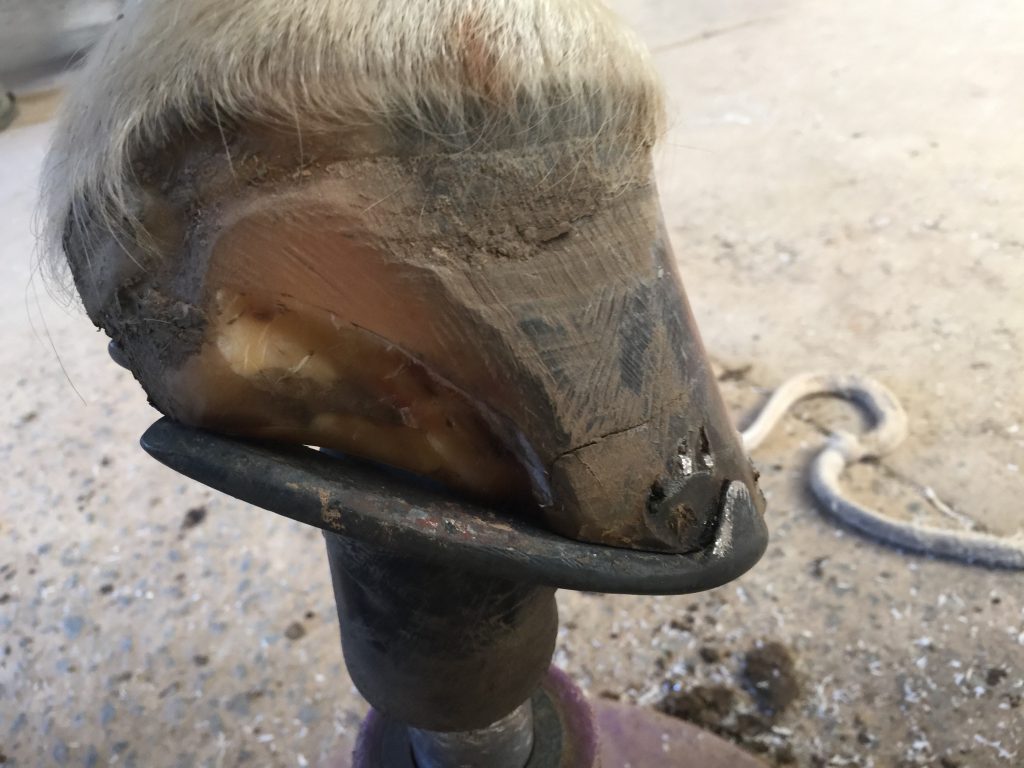
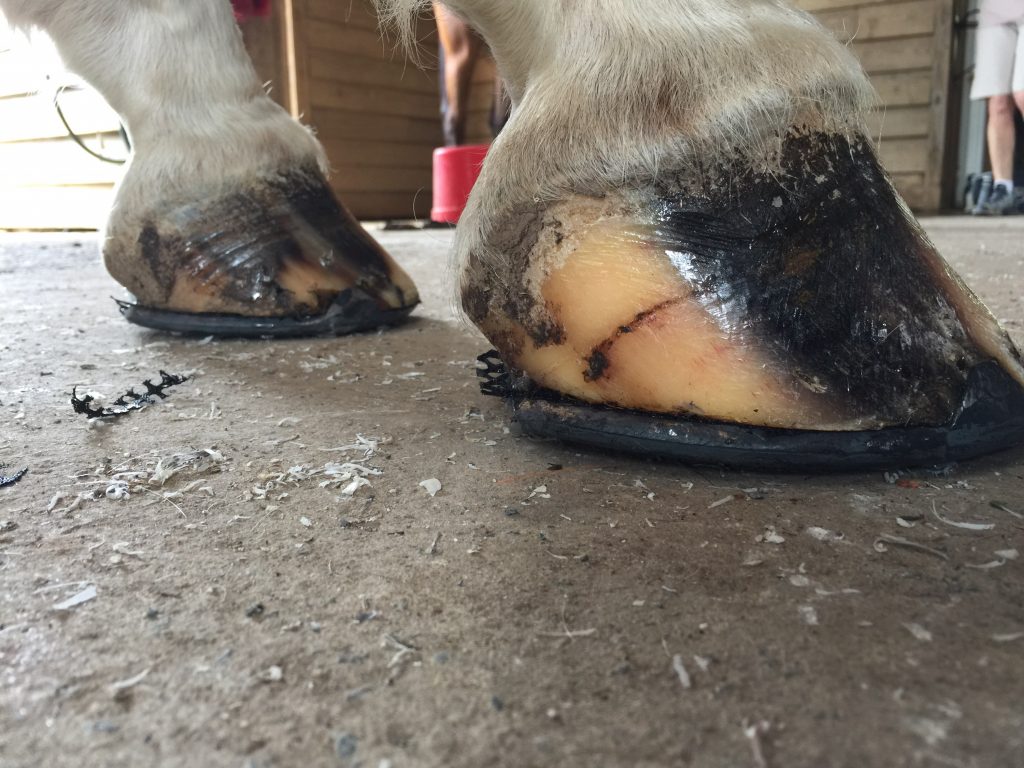
Preventing Quarter Cracks in the Future
This gelding has now started back into lower-level dressage work. As long as his feet are kept balanced so that he doesn’t develop the long-toe/low-heel or contracted heels again, this should be the end of his quarter cracks.
